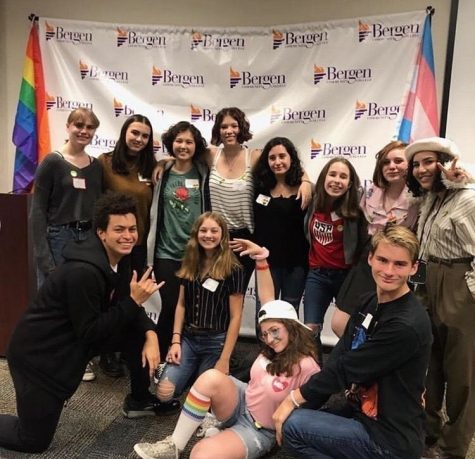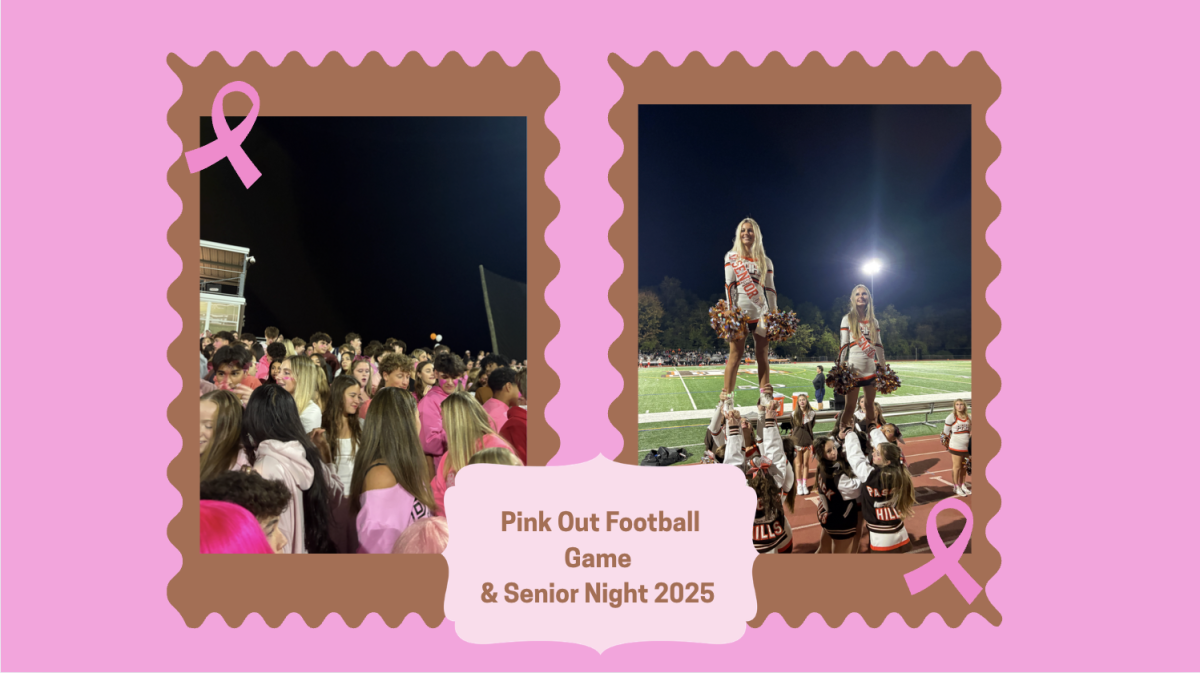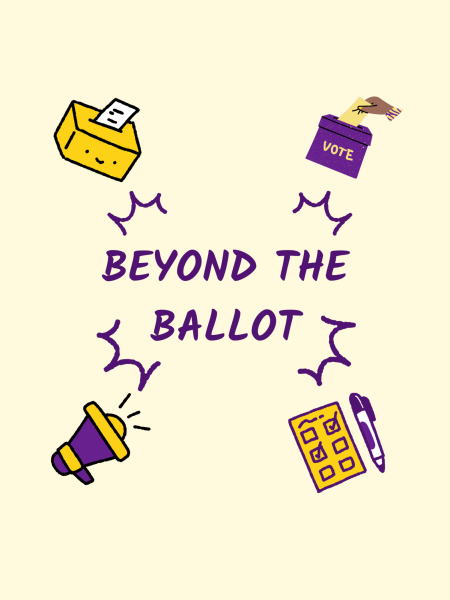Language evolves with gender-neutral pronouns
“With open hearts and minds, we can all benefit from letting go of antiquated gender norms and strict binary choices,” said Erica Franceski, co-advisor of the Gay-Straight Alliance at Hills.
The gender binary states there are two genders among humans –– male and female –– and it is prevalent throughout the world. As a result, many people use the pronouns “he/his” and “she/her” as a default when referring to a person.
However, as the world continues evolving to modern times, language is, too. In recent years, language has been changing to include neo-pronouns for people who do not identify with the gender binary.
Advertisement
The gender spectrum outside the binary consists of a variety of different gender identities that include, but are not limited to, identifying as non-binary or genderfluid.

Singer-songwriter Sam Smith (they/them) and actor Elliot Page (he/they) are some celebrities that have genderqueer identities.
Mrs. Erica Franceski, the student-family resource liaison and co-advisor for the Gay-Straight Alliance club (GSA) at Pascack Hills, stated that “as an educator, I find it helpful to look at gender identity as fluid and something other people tell me and not the other way around.”

Hills students at the Bergen GSA Summit last year.
Many Latin-based languages, such as Spanish, French, and Italian are gendered. This means that the majority of the words are considered masculine or feminine.
For example, in Spanish when a girl is described as pretty, it would be translated to “ella es bonita.” In contrast, a boy would be described as “el es bonito.”
People are taking different approaches to solve this challenge. As mentioned above, in Spanish, “a” or “o” depending on their gender. For a gender-neutral person, some alternatives would be using “e” or “x” at the end instead (“elle es bonite”).
With French, some use asterisks in place of letters that indicate a specific gender or using “iel” to avoid misgendering a person. Similarly, Italian speakers try to use asterisks or the “@” sign when writing to prevent referring to someone with the wrong gender.
English speakers are also starting to utilize “they/them” when referring to a person with a gender-neutral identity, and neo-pronouns such as “ze/zir” are being used to resolve confusion if referring to a singular person in a sentence.
GSA Vice President Jacob Levin stressed that these pronouns are a “necessary addition to not only the English lexicon but every language that people speak in the world” and properly gendering someone “can be so easily solved with one little word, a short step that goes a long way.”
Changing traditional rules that are hundreds of years old can be challenging. While the examples above are a few new terms attempting to include genderqueer identities, many of them are not an official part of the language.
Nevertheless, different aspects of everyday life are beginning to include genders diverging from the binary. Standardized tests, driver’s licenses, and other official documents are starting to offer a third option for gender rather than only female and male.
Hills students who took the PSAT or signed up for an AP exam through the College Board may have noticed three options to choose from when selecting gender. This third option is meant to encompass the spectrum of identities that are part of the LGBTQ+ community but do not fit with the binary.
Similarly, a third option usually identified as “X” can be found on driver’s licenses for people who do not identify as male or female. Many states, including New Jersey, are starting to provide this to their residents.
The Hills community itself is attempting to create a gender-neutral mascot to have a more inclusive environment too.
“With open hearts and minds, we can all benefit from letting go of antiquated gender norms and strict binary choices,” Franceski emphasized.
Even though it may be new and confusing, using correct pronouns are important for many people. Acknowledging their identities and correctly addressing them can allow them to feel safer, more respected, and more accepted by others.
“Being inclusive of gender-neutral pronouns is definitely beneficial for those who have questioned their identity,” Jasmine Delgado, senior member of the Hills equity team, commented. “It is new and can be difficult at times to add to our vocabulary, but is worth it if it makes that person feel seen and appreciated.”
To avoid being misgendered or misgendering someone else, people can introduce themselves with both their name and pronouns, and they can welcome the other person to do the same. Another way is to simply ask someone for their pronouns rather than continuously using the wrong ones.
“The expectation isn’t that you always know how someone wants to be identified,” Franceski explained, “but that you are open and willing to accept what that person tells you. And of course, make an effort to get it right next time.”
Sources:
https://www.washingtonpost.com/world/2019/12/15/guide-how-gender-neutral-language-is-developing-around-world/
https://www.nytimes.com/2019/05/29/us/nonbinary-drivers-licenses
https://globalvoices.org/2020/09/11/are-romance-languages-becoming-more-gender-neutral/
https://www.mypronouns.org/how

Sabrina Moe is a Hills senior. She joined the Trailblazer her sophomore year as a staff writer and edited for the In-Depth section her junior year. This year, Moe is eager to edit for the College Corner section and to manage college news among the Hills community.
Fun fact: Moe enjoys listening to various genres of music, especially music from the early 2010s.














































